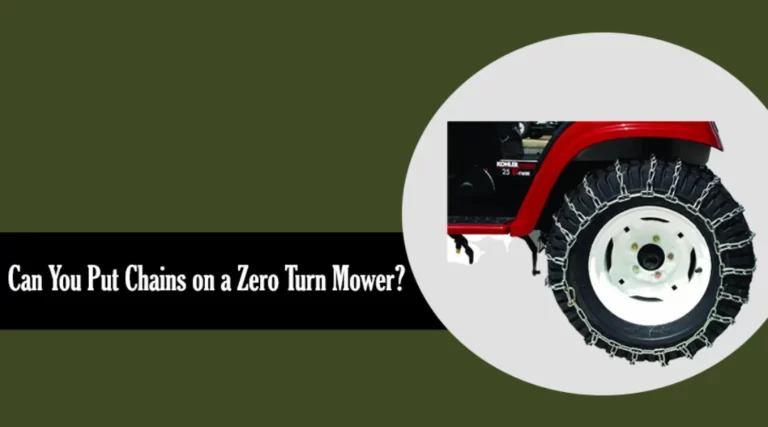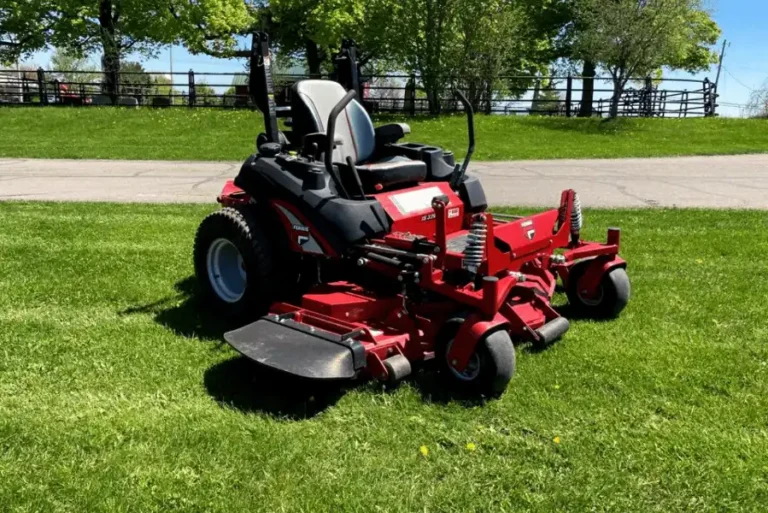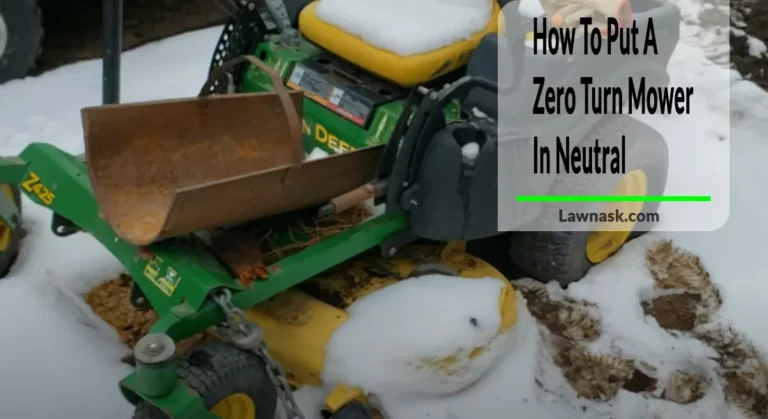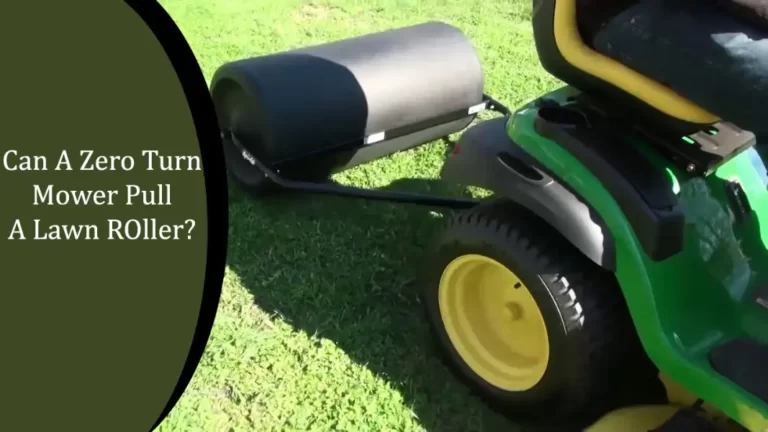Using a Zero Turn Mower in Sandy Soil: A Detailed Comprehension
Operating a Zero Turn Mower in Sandy Soil terrain presents unique difficulties. In sandy terrain, a zero turn lawn mower is challenging to use. Also, there are many kinds of blades that work well on sandy soil.
The use of a zero-turn mower on sandy soil will be covered in this article. Read on to learn about the solutions to uneven cutting, erosion, nutrient deficiency, moisture, dust, and other potential issues with the zero-turn mowers.
Key Points:
- Sandy soil has good drainage, little organic content, and little nutrient retention. It also has a granular texture.
- Sandy soil can present problems with nutrient deficit, rapid drainage, uneven cutting, and erosion.
- In sandy soil, zero turn mowers can be used with high-lift, mulching, gator, heat-treated, low-lift, and Marbain blades as appropriate blade alternatives.
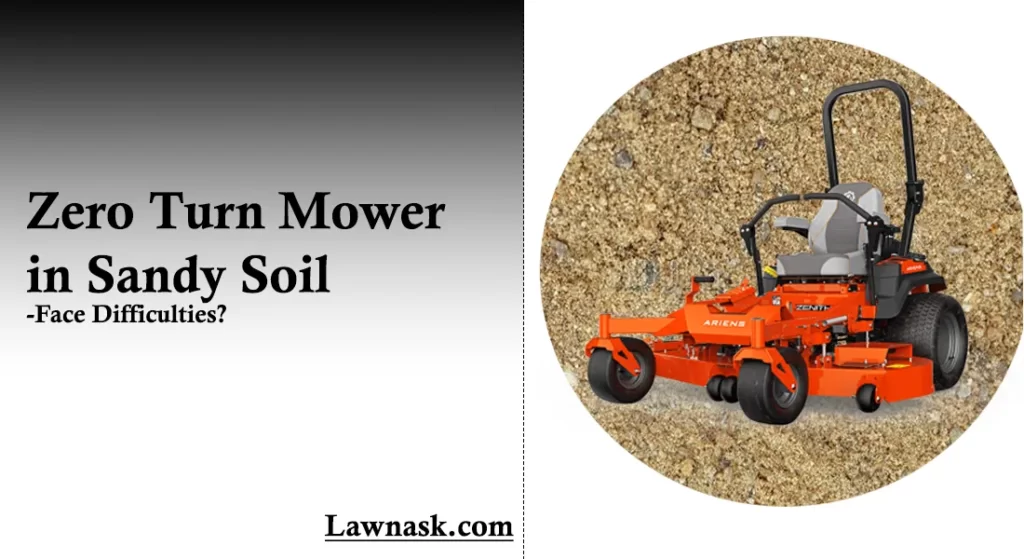
What Are the Characteristics of Sandy Soil?
Sandy soil is renowned for having unique qualities. It differs from other soil types due to them. The following are the main traits of sandy soil:
- Granular Texture: The texture of sandy soil is granular or gritty. It doesn’t clump together easily and feels loose to the touch. The size of the individual particles is substantial. It is so excellent for removing water.
- Excellent Drainage: Sandy soil drains incredibly effective. It easily lets water travel through it. It can be both helpful and difficult. Sandy soil avoids waterlogging but also results in poor moisture retention in the soil.
- Less Organic Matter: Sandy soil generally has little organic matter. To enhance soil quality, it is frequently required to amend with organic matter.
- Low Nutrient: In sandy soil, nutrients rapidly leak out.
- Less Compaction: Compared to clay or loam soils, sandier soil is less likely to become compacted.
- Low pH: Sandy soils typically have a pH range between a little bit acidic and neutral.
- Aeration: Sandy soil has great aeration due to its loose texture. It makes it simple for grass roots to access oxygen.
- Workable: Sandstone dirt is simple to work with. However, it can need frequent fertilizer and watering.
Zero Turn Mower in Sandy Soil: How Does it Affect Mowing?
When using zero-turn mowers, sandy soil can have both advantages and downsides. Sandy soil can have the following effects on zero-turn mower performance:
Advantages
- Sandy soil typically offers zero-turn mowers with good traction. It’s loose texture makes it possible for the tires of the mower to efficiently grasp the ground. You’ll be less likely to become stuck or lose control as a result.
- Compared to clay or loam soils, sandy soil is less likely to become compacted. Therefore, it is less probable that the tires of the mower will compact the dirt. It improves the general soil structure and health of the grass roots.
- Sandy soil allows for excellent drainage, making cleanup quick. So, any waste or clippings that the mower leaves behind are less likely to cause problems. Compared to soils with lower drainage, sandy soil is frequently simpler to clean up.
Disadvantages
- The ability of sandy soil to hold onto nutrients is low. The health of the grass may suffer as a result. Because they mix grass clippings into the soil, zero-turn mowers might worsen this problem.
- Sandy soil quickly drains water. Soil evaporates quickly. In order to keep the lawn at an appropriate moisture level, more frequent maintenance is needed.
- Since sandy soil has a loose texture, it may be uneven. This can degrade the mowing job’s quality. When traveling over uneven terrain, the mower’s cutting deck could not always keep a consistent cutting height.
- Sandy soil is more prone to erosion, particularly on sloping terrain. You might have noticed that the mower’s tires and blades can also damage the soil.
- Sandy soil can generate more dust and debris when mowed. This can be a hassle for you. When mowing in sandy conditions, it is advised to put on safety gear. You should waer eye protection and a dust mask.
Solution to Different Mowing Issues in the Sandy Soil
You may overcome mowing difficulties and keep up a healthy lawn with the appropriate approaches and fixes. The following are answers to typical mowing problems in sandy soil:
Uneven Cutting
Change the height of the cutting deck of your zero-turn mower to fit the contours of your sandy lawn.
To keep the cutting height uniform, use rollers or the wheels on the mower deck. Do this particularly on rocky terrain.
Erosion Preventing
Implement erosion control methods to prevent erosion.
In regions where erosion is a problem, you ought to utilize mulch, erosion mats, or ground cover plants. When feasible, you should avoid mowing on steep slopes to reduce soil disturbance.
Nutrient Deficiency
Apply a balanced fertilizer to your grass on a regular basis. It will be best if you use slow-release fertilizers.
Pick a fertilizer that contains the right nutrients for the type of grass you have. Also take into account any particular deficiencies in your sandy soil.
Rapid Moisture Drainage
Give your lawn more frequent and intense waterings. This will guarantee that the soil is kept at the proper moisture level.
Consider employing a drip irrigation system or soaker hose. The root zone will receive water slowly and uniformly from it.
Dust
You should wear protective glasses and a dust mask when there is dust or debris.
While mowing, it will shield you from dust and debris. To lessen the spread of debris, mow when the wind is calm.
Mower Maintenance Procedures
Maintain your zero-turn mower on a regular basis. The blades must be kept sharp, and the deck must be kept tidy.
Also, you must grease the moving parts. A properly maintained mower will offer a cleaner and more effective cut.
Grass Type
Choose grass species that can thrive in sandy soil. More drought-resistant grasses that can flourish in sandy soil are Bermuda or Zoysia.
Soil Quality
Add organic materials to the soil to raise its quality. Your sandy soil needs compost or well-rotted manure. This will improve the soil’s ability to store moisture and retain nutrients.
Wet or Dry Grass
When the soil is just a little bit moist, try to mow your lawn. When the ground is extremely dry, avoid mowing. This may result in excessive dust and uneven cutting.
Caution
Be aware of the speed and maneuverability of your mower. When traveling across rocky or sandy terrain, use caution.
To lessen the possibility of scalping or harming the lawn, slow down on tough terrain.
What Are the Best Zero Turn Mower Blades for Sandy Soil?
In sandy soil, blades should provide effective cutting and lessen the chance of scalping. Also, they must to be strong enough to survive harsh environments.
Mower blades that are frequently suitable for sandy soil include the following:
1. High-Lift Blades
The trailing edge of high-lift blades is sharply curved upward. In sandy soil, this shape aids in lifting grass blades for cleaner discharge and better cutting.
2. Mulching Blades
Mulching blades feature several cutting surfaces and a distinctive design. They are designed to shred grass clippings into smaller bits for mulching.
Mulching blades can aid in the recycling of nutrients, making them beneficial in sandy soil.
3. Gator Blades
Gator blades have a distinctive design and serrated teeth on the edges. It improves the efficiency of bagging and mulching. The requirement for raking is diminished in sandy soil with these blades.
4. Heat-treated Blades
Blades that have been heat-treated are made of steel. In sandy soil, these are more durable against wear and abrasion.
5. Low-lift Blades
Low-lift blades feature a softer trailing edge curvature. To avoid scalping, they produce less lift and are excellent for sandy soil lawns.
6. Marbain Blades
A specific steel alloy used to create Marbain blades is renowned for its durability and resistance to abrasion. Even in abrasive sandy soil, they are resilient and have a longer lifespan.
Frequently Asked Questions (FAQs)
I have sandy soil; can I use a zero-turn mower?
Yes, with certain procedures and factors.
What is the biggest difficulty when mowing in sandy soil?
Rapid moisture drainage and nutrient inadequacy.
Which kind of grass grows best in sand?
Bermuda, buffalo, and zoysia, grass.
Can I operate my zero-turn mower with a bagging attachment in sandy soil?
Yes.
Related Posts:
- Resolving Electrical Issues in Simplicity Zero Turn Mowers
- Determining if a Zero Turn Mower Will Fit on a 5×8 Trailer
- Troubleshooting the Problem: Zero-Turn Mower Stalling When Arms Are Engaged
- Common Zero-Turn Hydrostatic Transmission Issues
- Resolving the Blade Disengagement Issue in Zero-Turn Mowers

